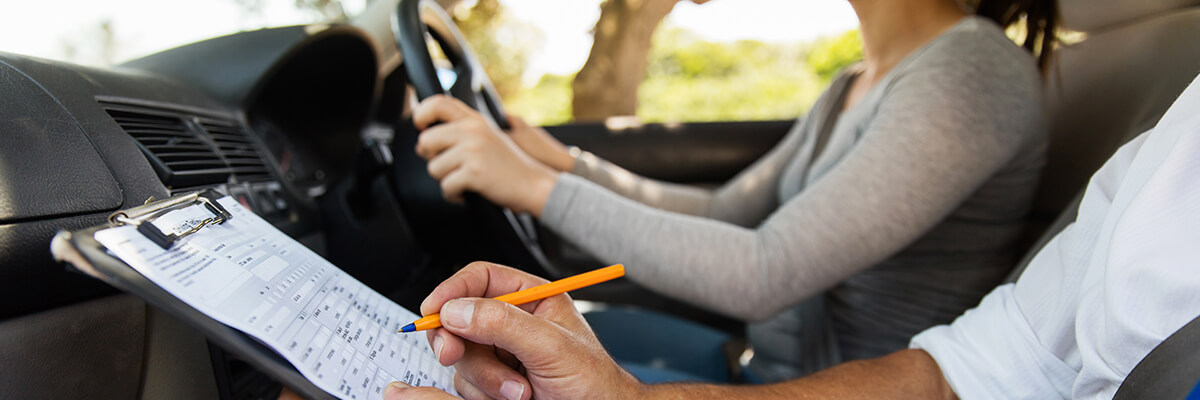The first step towards getting your driving licence is to successfully pass your theory test, so it is understandable that the majority of learners opt for getting it done and out of the way as quickly as possible.
Many drivers are often surprised that your theory test can actually prove to be trickier to learn than what you had first expected, which means that it is important to make sure that you spend time practising and don’t just leave everything until the week before your exam date.
To give you a head start and help you to smash your theory test quickly, take a look at our tips on how to study for your theory test.
5 Tips On How To Study For Your Theory Test
We’re not going to try to convince you that your revising for your theory test is going to be fun and exciting, nine times out of ten, it is going to be somewhat dull and tedious. Nevertheless, it has to be done.
There will be topics during your theory test that you’re going to be more familiar with than others. Subjects such as road signs you’re likely to have at least some knowledge on already, but other sections like motorway driving and essential documentation, you may not be as sure on. You will be allocated up to 57 minutes to finish your theory test, and it will include 50 multiple choice questions, it’ll then move onto the hazard perception section.
Luckily, you’re not going to be thrown straight into having to answer a tonne of questions. Before the test starts, not only will you be given a set of instructions on how the test works, but you’ll also be given the opportunity to do a few practice questions to get into the swing of things; this will be the same when it comes to your hazard perception. It’s up to you whether you answer practice questions or not, but we do suggest making the most out of them, even if you are feeling super confident.
Knowing where to start when it comes to theory test revision can be relatively tricky, which makes it easy to keep putting off. So, we’ve put together a number of handy tips and tricks which will make revision so much easier!
1. Revision Timetable
As mentioned above, theory test revision is easy to put off, and there will be a million other things that you would probably prefer to spend your free time doing, which makes creating a timetable so important. Many assume that to pass your theory, you need to spend hours on end revising and doing mock tests, but if you start enough in advance, this doesn’t have to be the case.
Your scheduled revision sessions can be at a time and for a length that works best for you. If you learn best in short, regular bursts then you may want to consider opting for 15 minutes a day of reading up The Highway Code and answering mock questions. On the other hand, others prefer to sit down for a longer period of time and try to get in as much revision as possible, so then they can have a break for the next few days. Both of which are great ways of learning and work equally as effectively.
During your revision sessions, aim to be as undistracted as possible, so you can put all your focus into absorbing as much knowledge as possible. If you know that you are easily distracted, which a lot of us are, it may be worth going into a room where you can sit alone in silence and work your way through your revision. It doesn’t have to be for a long time, the quicker you get your revision out of the way, the quicker you can get on with your day.
As a driving school in Milton Keynes for over ten years, we’ve picked up a load of different handy tips and tricks when it comes to making theory test revision as painless as possible. One that has particularly stood out over the years is to use times where you’d usually be sitting around bored scrolling through your phone to practice some questions. This can be anything from sitting on the bus on the way to work or school, laying in bed at the end of the way or even eating your breakfast in the morning.

2. Keep An Eye Out For Road Signs
One of the biggest shocks that learners get when first starting their theory test training is the crazy amount of road signs that are used in the UK. Signs range from those giving orders and warning drivers to both direction and road work signs; all of which you need to learn as a random section will be used as questions during your test.
If you opt for purchasing a theory test training app, there will be a whole section called ‘road and traffic signs’ where you can begin to memorise them one by one, then once confident, start a mock test solely on identifying the correct signs. However, for additional practice, it is a fantastic idea to utilise every journey to test your knowledge. Whether you’re on the way to work, school or to socialise with friends, every time you spot a road or traffic sign, why not see whether you can name the sign and describe its meaning? This way, you can begin in envision yourself behind the wheel and understand how you would alter your driving to suit the instructions stated on the sign. If you’re a passenger with a family member or friend, ask them whether you’ve got the correct answer and if not, whether they have any tips that may help that particular sign to stick into your mind in the future.
Remember, we’ve all been there once, so asking other drivers for any advice on how they remember different instruction could prove incredibly beneficial, they may have handy tips your driving instructor doesn’t.

3. Practice With Your Driving Instructor
Although other drivers are a fantastic source of information to help you to pass, the only person that is going to have in-depth knowledge on every question you may be asked is your driving instructor, so use them to your advantage!
During lessons, perhaps ask your driving instructor to test you on questions that tie into what you are doing during the lesson. This way, not only will you be able to improve your driving skills, but also when you get to your next revision session, you would have already had a boost in knowledge and will be ready to begin a new topic. For example, one theory test question is “if turning left to enter a side road, which hazard should you watch out for the most?”, so in your lesson, when approaching a small junction, this is the question your instructor will ask. If you’re unsure on the answer, not to worry, your instructor will be able to visually show you precisely what potential hazards are around and what to do if one arises. Having physical experience in dealing with situations asked during your theory test will make remembering the answer so much easier, all you’ll have to do is think back to that particular lesson.
Driving instructors teach hundreds of pupils every single year, so that means they have helped a lot of people with their theory test. There are likely to be specific questions or topics that prove an ongoing struggle amongst learners, which means they can give you a small heads up on areas that are likely to require a little extra revision.

4. Look Out For Potential Hazards
Hazard perception can be tricky to practice because it is less about memorising answers and more about learning how to react promptly. Of course, it is vital to spend time going through example videos to get yourself used to what is expected from you during your test, but it is even more important to know how to react if a similar situation came up when driving independantly.
The purpose of a hazard perception test is to teach you how to remain vigilant and make you aware that there will be a lot of hazards on the roads that you will be responsible for responding to. During your hazard perception test, you will be exposed to some of the most common threats you’ll be faced with when behind the wheel to prepare you for the future.
With this in mind, it is recommended, that as your test approaches, even when you aren’t driving, you remain observant of different hazards that are around you. Use every journey as an opportunity to practice further. If a situation does come up, consider how you may respond if you were the driver in charge.

5. Keep Taking Mock Tests
As soon as you feel as if theory test information is starting to sink in, begin taking regular mock tests. One of the biggest causes of stress in any type of exam is the fear of the unexpected, but this can be taken away through simply participating in mock tests. Do not leave mock tests until the day before your test date, try to start as early as possible. Fifty questions is a lot to answer, and you do have a deadline in which they all have to be completed by, so you do not want to fall short of time because you hadn’t prepared beforehand.
Mock tests are also ideal for highlighting the areas that are proving a little more of a struggle to remember. After you have answered all the questions, you will be given a detailed breakdown on your performance in each topic making it easy to spot the subjects you should focus on during your next revision session. If you notice that over the past few mock tests, you have achieved 100% in particular section, you know that you can skip this topic and simply refresh your memory closer to the time of your test.
Although it is vital to complete mock tests in the lead up to your test, do not feel as if you have to cram in multiple tests on the day of your theory test. You are likely to put yourself under immense pressure to get every question right, making you stressed and frustrated going into your test.

Keep Calm and Pass Your Theory Test
Try to make the day of your test as relaxed as possible and always leave yourself plenty of time to arrive at your local theory test centre. Rushing around and leaving your arrival to the very last minute will do nothing but make you incredibly flustered and stressed. Aim to arrive at the test centre around 15 minutes before your exam begins to give yourself some time to sign in, take a breather, go to the toilet if needed and go into your test feeling cool, calm and collected.
